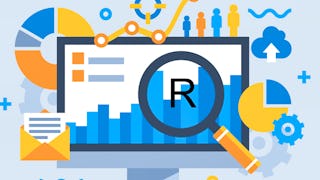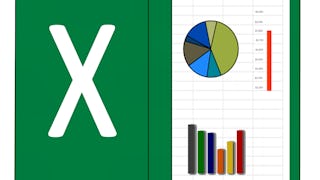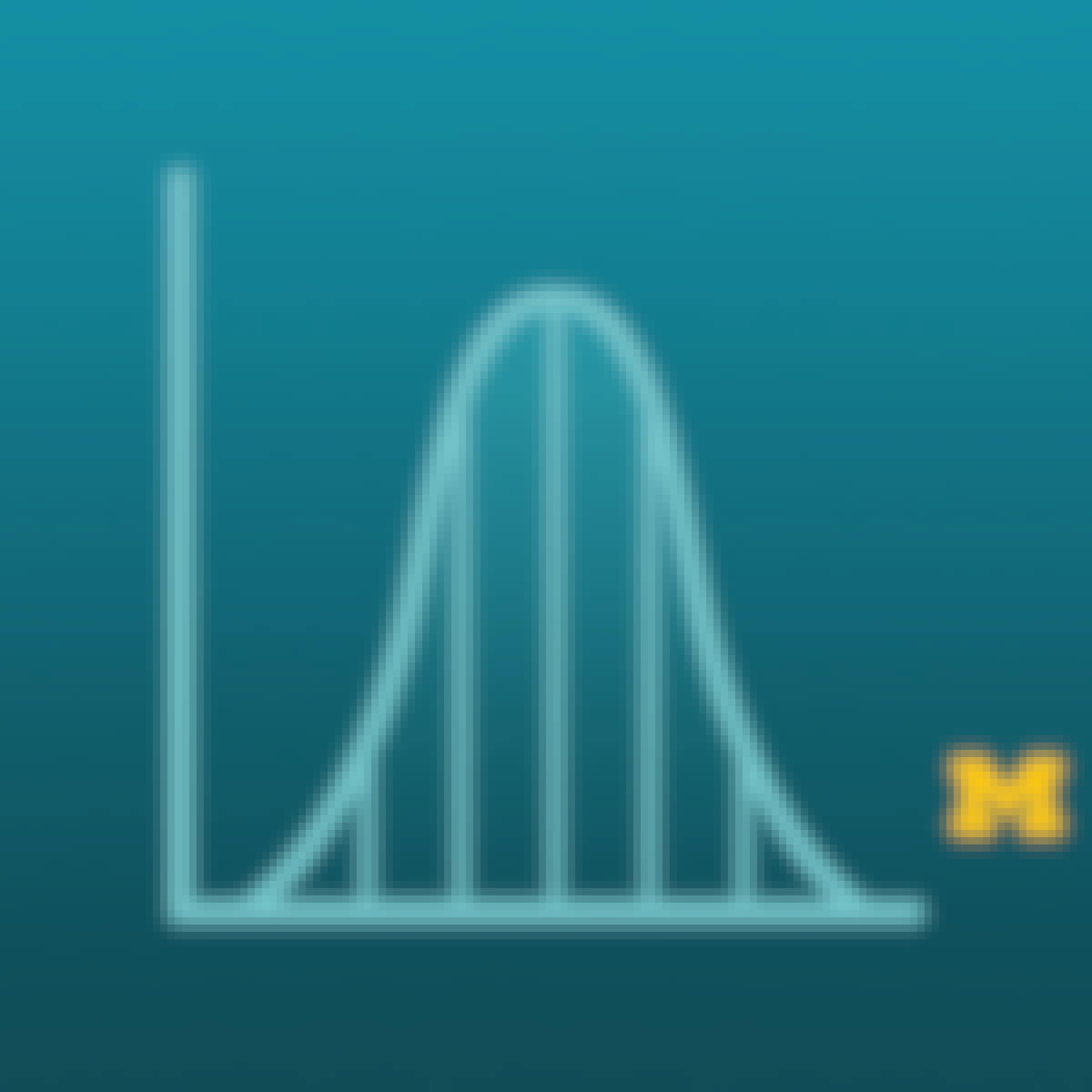Filter by
SubjectRequired
LanguageRequired
The language used throughout the course, in both instruction and assessments.
Learning ProductRequired
LevelRequired
DurationRequired
SkillsRequired
SubtitlesRequired
EducatorRequired
Explore the Data Analysis & Python Course Catalog

Skills you'll gain: Regression Analysis, Statistical Hypothesis Testing, Statistical Analysis, Advanced Analytics, Correlation Analysis, Data Analysis, Predictive Modeling, Statistical Modeling, Supervised Learning, Variance Analysis, Machine Learning Methods, Python Programming

Skills you'll gain: Data Storytelling, Interactive Data Visualization, Data Visualization Software, Dashboard, Ggplot2, Plot (Graphics), Shiny (R Package), R Programming, Leaflet (Software), Graphing, Scatter Plots, Box Plots, Spatial Data Analysis, Histogram, UI Components, User Interface (UI)

Coursera Project Network
Skills you'll gain: Data Science, Web Development, Python Programming, Programming Principles, Artificial Intelligence, Computational Thinking, Computer Programming, Application Development, Scientific Visualization
 Status: Free
Status: FreeJohns Hopkins University
Skills you'll gain: Risk Modeling, Operations Research, Regression Analysis, Microsoft Excel, Business Analytics, Risk Analysis, Business Process Modeling, Business Modeling, Data Modeling, Resource Allocation, Statistical Analysis, Process Optimization, Financial Analysis, Predictive Analytics, Transportation Operations, Complex Problem Solving, Linear Algebra

Tableau Learning Partner
Skills you'll gain: Data Storytelling, Exploratory Data Analysis, Requirements Elicitation, Data Presentation, Data Governance, Data Ethics, Tableau Software, Business Analysis, Data Literacy, Data Visualization Software, Data Warehousing, Business Metrics, Dashboard, Statistical Visualization, Extract, Transform, Load, Data Analysis, Spatial Data Analysis, Data Quality, Data Management, Interactive Data Visualization

Macquarie University
Skills you'll gain: Power BI, Data Analysis Expressions (DAX), Data Visualization Software, Data Modeling, Microsoft Excel, Interactive Data Visualization, Pivot Tables And Charts, Data Transformation, Dashboard, Data Manipulation, Data Analysis Software, Microsoft Power Platform, Data Import/Export, Data Cleansing

Skills you'll gain: MySQL, Database Design, Version Control, Database Management Systems, Database Management, MySQL Workbench, Extract, Transform, Load, Data Modeling, Data Structures, SQL, Unix Commands, Relational Databases, Databases, Git (Version Control System), Database Systems, Stored Procedure, Object Oriented Programming (OOP), Unit Testing, Algorithms, Django (Web Framework)

Skills you'll gain: Regression Analysis, Data Visualization, Statistical Analysis, Advanced Analytics, Data Analysis, Business Analytics, Data-Driven Decision-Making, Predictive Modeling, Machine Learning Methods, Interviewing Skills, Portfolio Management

University of Michigan
Skills you'll gain: Sampling (Statistics), Data Visualization, Statistics, Matplotlib, Statistical Visualization, Probability & Statistics, Jupyter, Statistical Methods, Data Visualization Software, Data Analysis, Statistical Analysis, Exploratory Data Analysis, Descriptive Statistics, Statistical Inference, Data Collection, NumPy, Histogram, Python Programming
 Status: New
Status: NewMicrosoft
Skills you'll gain: Version Control, GitHub, Debugging, Git (Version Control System), Unit Testing, Data Structures, Python Programming, Software Testing, Development Testing, Scripting, Computer Programming, Web Development, Algorithms, Program Development, Scripting Languages, Integrated Development Environments, Object Oriented Programming (OOP)

Multiple educators
Skills you'll gain: Unsupervised Learning, Supervised Learning, Machine Learning Methods, Classification And Regression Tree (CART), Artificial Intelligence and Machine Learning (AI/ML), Applied Machine Learning, Machine Learning Algorithms, Machine Learning, Jupyter, Data Ethics, Decision Tree Learning, Tensorflow, Scikit Learn (Machine Learning Library), Artificial Intelligence, NumPy, Predictive Modeling, Deep Learning, Reinforcement Learning, Random Forest Algorithm, Feature Engineering

University of Colorado System
Skills you'll gain: Database Design, Data Warehousing, Relational Databases, Decision Support Systems, Business Intelligence, Data Modeling, Database Management Systems, Databases, Dashboard, Business Process Management, SQL, Star Schema, Data Governance, Oracle Databases, Data Integration, Performance Measurement, Extract, Transform, Load, Business Analytics, MicroStrategy, Data Visualization Software
Data Analysis With Python learners also search
In summary, here are 10 of our most popular data analysis with python courses
- Regression Analysis: Simplify Complex Data Relationships: Google
- Data Visualization with R: IBM
- Introduction to Python: Coursera Project Network
- Business Analytics with Excel: Elementary to Advanced: Johns Hopkins University
- Tableau Business Intelligence Analyst: Tableau Learning Partner
- Excel Power Tools for Data Analysis: Macquarie University
- Meta Database Engineer: Meta
- Google Advanced Data Analytics Capstone: Google
- Understanding and Visualizing Data with Python: University of Michigan
- Python Programming Fundamentals: Microsoft










